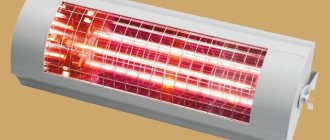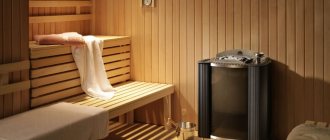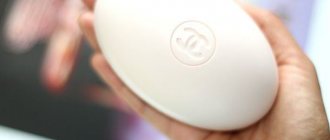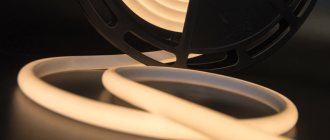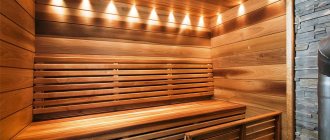Bathroom lamps are not only light sources, but also one of the ways to create a state of relaxation and peace. Therefore, along with the technical characteristics, you need to pay attention to the aesthetic side and the brightness of the light flux. Too bright lighting will not allow you to relax, and too much darkness can cause trouble. When choosing light, it is better to purchase a lighting device that gives a warm, slightly yellowish light. It promotes relaxation more than other spectrums.
[toc]
Requirements for lighting in baths and saunas
Safety. The first and perhaps the most important criterion. Choose impact-resistant, moisture-proof, heat-resistant lighting fixtures. Make the wiring as protected from moisture and heat as possible.
Durability. In order not to change lamps every six months, you should take care in advance: choose a high-quality, reliable device that will work for a long time in difficult bath conditions.
Aesthetics. An elegant lamp that is pleasing to the eye will promote good rest and relaxation. It is important to choose the color temperature: warm tones help you relax, while cold tones, on the contrary, invigorate. Therefore, for a bath it is better to choose lamps with a low color temperature: 2700-3500 K.
Simplicity and ease of use. Bathroom lighting fixtures are chosen to be as easy to maintain and operate as possible. The simpler the shape of the lamp, the more difficult it is to touch it with your hand or head.
Which ones can be used?
The modern market offers a huge variety of types of lighting fixtures.
They differ in design, power, level of protection, and purpose. That is why it is worth knowing that not every lamp offered by a sales consultant will be suitable for your bathhouse.
Important! For a bathhouse, fluorescent, halogen, LED, fiber optic lamps, as well as classic incandescent lamps are usually chosen. Let's take a closer look at each of them, sorting out all the advantages and disadvantages.
Let's take a closer look at each of them, sorting out all the advantages and disadvantages.
Proper and safe lighting placement
In addition to the reliability requirements of the light sources themselves, it is important to place them safely.
- You should not place lamps near the stove: hot air will quickly destroy them.
- It is recommended to install wall lamps at an average level: those mounted too close to the ceiling or floor will collect more moisture and condensation.
- Ceiling lamps should not touch people's heads. Therefore, it is recommended to hang ceiling lamps in the corners of the bathhouse.
- The angular location is also good because the lamps shine from behind people’s backs: the light source does not blind the eyes.
- You should not place light sources where you can hit them.
Methods for connecting electrical wiring to points
In order to correctly install all the light sources in the bathhouse, you need to know how to conduct electrical wiring to each of them.
There are two ways:
- Open;
- Hidden.
It is better to install electrical wiring inside the bathhouse using an open method, since it is safer and more convenient. In this case, the wiring lines are quite easy to view, and there are no difficulties during the replacement or repair process.
It is better to conduct hidden electrical wiring to lamps only in the steam room.
You should also follow some rules when wiring to lamps:
The electrics in the bathhouse are mounted exclusively on the lower part of the wall; The electric wire to the lamp in the steam room is routed directly to the place of its installation; It is very important that all electrical appliances in the bathhouse are grounded. This can be done using a cable consisting of three cores
Two of these conductors are connected to phase and neutral, and the third is connected to the panel or fittings; All sockets in the bathhouse must be provided with an individual differential switch; The use of artificially connected wires in the steam room is not allowed, only solid wiring; The wires from each of the elements are connected only on the panel; The shield should be installed as far as possible from the steam room.
Information. The electrical wiring cable must be laid either strictly horizontally or strictly vertically.
Choosing lamps and fixtures for the relaxation room, shower, steam room
When choosing a lamp, it is important to consider its degree of protection - IP.
IP decryption
All electrical devices indicate the degree of protection. The first number indicates how protected the lamp is from dust and solid particles; the second shows the degree of moisture protection. The bathhouse has several rooms, each of which has its own safety requirements.
Washing area. It consists of several zones:
- Shower room (pool, bath). This is the place of greatest danger for lamps: splashes and jets of water can enter directly. Light sources with a moisture protection level of at least 7 are suitable. For example, ip67/68. They must also be sealed, with anti-corrosion protection.
Lamps (ip68) for showers:
Cariitti LED S-Paver Led 3200 | Cariitti fiber optic S-Paver 3300 |
Cariitti LED S-Paver Led 3200
Cariitti fiber optic S-Paver 3300
- Areas near the shower, pool, faucet. Splashes can also reach lighting fixtures. We recommend a water protection class of at least 5, and a dust protection class of at least 4. Lamps with IP45/46/55 are suitable.
- Zones at a distance of half a meter from the water. Protection from accidental drops will be provided by a lamp with a degree of protection of at least 4: ip44/45.
- Areas where splashes cannot reach. If there are any, then the first protection class is sufficient: ip11/12. It is not recommended to take it lower, as condensation will accumulate in the rooms.
It is better to install dim light bulbs in washing areas. This reduces the likelihood of damage due to accidental ingress of water: the lower the power of the light source, the less the lamp heats up.
Dressing room and rest room. These rooms are protected from direct drops and splashes of water, but condensation is present. Therefore, the degree of moisture protection (second digit in IP) of lamps is at least 1.
The power of the lamps does not play a role in safety; you can set the light to the desired brightness. Experts recommend using less powerful, dim light sources in relaxation rooms for greater relaxation. And in the dressing room you can turn it brighter: 75-100 W for an incandescent lamp or 10-15 W for LED lamps.
Steam zone. Difficult for electricians due to high temperature and humidity. For a steam room, it is important to choose lamps with a heat resistance level of at least 160⁰C. It’s better to choose with a reserve (especially for ceiling light sources): up to 300⁰С. Light sources are chosen with a moisture protection level of at least 5. For example, ip55/65.
Select lamps with heat-resistant, sealed housings, rubber seals, and ceramic (porcelain) sockets. Prefer a protective grille made of stainless steel or with a good galvanic coating.
Lamp options (ip65) for the steam room:
NBB-03-60-003 (Terma 3) | NPP-03-60-021 Bannik 1401 | NPP-03-60-014 Bannik 1302 |
NBB-03-60-003 (Terma 3)
NPP-03-60-021 Bannik 1401
NPP-03-60-014 Bannik 1302
It is recommended to additionally place the lamp in a so-called enclosure. They will look stylish and protect from splinters if the lamp bursts.
Protective wooden lampshade.
Protective wooden lampshade.
The power of the steam room lamps should not exceed 60 W, otherwise the lamp will get very hot on the inside.
A good option would be to organize low-voltage (12 V) lighting. To do this, you will need a step-down transformer and special lamps.
Manufacturers
As always, when choosing any equipment, the question arises about the manufacturer: whose products are better to buy. Finnish companies Tylo and Harvia have long been leaders in the segment of lamps for baths and saunas. They produce heat-resistant lamps. They are worth buying for the steam room. Although their price tag is decent, they are distinguished by high quality and reliability, and have been tested more than once or twice in numerous baths and saunas.
In other rooms you can get by with more budget products. Linder lamps have more affordable prices, but their quality is lower. They are usually recommended to be installed not in a steam room, but in a dressing room, shower or locker room.
In general, there are many German, Czech and even Russian companies that make such equipment. Look for those that suit you in terms of characteristics, not the manufacturers.
Types of lamps used
Incandescent lamps
A good option for a steam room or washing room, provided several conditions are met: heat-resistant housing, moisture protection level of at least 5 (ip45/55/65), power does not exceed 60 W. Such a light bulb is inexpensive, and considering that the light in the bathhouse is not on every day, it will last quite a long time.
However, they are quite fragile, so the lamp for incandescent lamps must comply with all safety regulations: sealed and with protective grilles.
There are models with a safe voltage of 36 V with connection via a step-down transformer.
Fluorescent lamps
Despite their advantages - long service life, energy saving - they are not suitable for baths. Fluorescent light sources cannot : they do not work well at temperatures above 60⁰C. This is also a bad option for unheated bathhouses and for the waiting room: frosty air from the street will significantly shorten the service life. In addition, in winter, after freezing, they will take a long time to warm up and start up. In addition, due to the presence of mercury vapor in the composition, they are dangerous if the flask is damaged.
Halogen lamps
Suitable for steam rooms: not afraid of high temperatures, protected from splashes (lamp with internal bulb). Since the light in the bathhouse does not burn constantly, the short service life does not play a significant role. Moreover, halogen lights cost little.
Special halogen lamps are produced especially for baths: they are protected by special heat-resistant housings and have low power (15-35 W).
LED bulbs
Opinions differ about the use of these lamps in the steam room. LED light sources can be used in a sauna, but these lamps begin to physically degrade LEDs at a temperature of 65⁰C (on average). The intensity of the degradation process varies depending on the model.
LED lamps are perfect for any other sauna room. They are not afraid of moisture, heat up slightly during operation, last a long time, and are not afraid of low temperatures. Moreover, it is with their help that you can organize a low-voltage lighting system without any problems. Design possibilities are expanded by the use of LED strips.
Fiber optic lighting for sauna
Expensive, but the most durable, safe option for steam rooms and washrooms. Withstands temperatures up to 220 ⁰С. In addition, due to the physical characteristics of light - lighting works thanks to light waves, and not electric ones - optical fiber is not afraid of water.
With the help of optical fiber, you can come up with many interesting interior solutions.
Example of fiber optic backlight
The essence of such lighting is that the light source (any, but more often LED) is placed not in the room itself, but outside it. Light rays from the lamp “enter” the room through special fiber optic light guides. These are usually glass flexible tubes.
Operating principle of fiber optic lighting
Threaded bits
For the convenience of clients, companies that specialize in lighting baths offer kits for fiber optic lighting. Their cost starts from 25,000 rubles, depending on the configuration.
Salt lamps.
They will not only help illuminate the bathhouse, but will make the atmosphere in it healthier. Salt lamps destroy allergens, microorganisms, and saturate the air with healing vapors.
Salt lamps are made from Himalayan salt. A lampshade is made from salt into which a regular light bulb is screwed. Lampshades are made in different shapes, sizes, and colors. A variety of designs will allow you to decorate any bathhouse.
Caring for the lamp is easy: the main thing is to keep it clean. Keep in mind that in a steam room atmosphere, the lifespan of a salt lamp is reduced because the salt becomes soggy and crumbles in the humid atmosphere of the steam room. The price of such lamps varies greatly depending on the processing of the material. The average price for an untreated lamp weighing 2-3 kg is 700-900 rubles. More about salt lamps
Heat-resistant with glass shades
On sale you can find not only glass lampshades, but also plastic ones, and we are talking about very popular manufacturers, such as Harvia. However, even the authority of such a company may not be a guarantee of quality. We came across reviews that said that such plastic products did not last long in the steam room, having melted. Therefore, we still recommend glass, although it is more dangerous if broken.
Heat-resistant lamps for saunas
It was already mentioned above that the heat resistance of the lamp is ensured by the presence of a ceramic base and a glass cap. But even this design is not recommended to be installed directly on the ceiling. Usually in steam rooms the lighting is on the wall.
At the same time, lamp manufacturers offer several options for location relative to the wall. The lamp can be adjacent to the wall (the length of the light bulb is parallel to the base), protruding (the light bulb is perpendicular to the base), or can be mounted at an angle (called “corner”, although it is not intended for mounting in the corner between walls).
Wooden lampshades: grilles and screens
An attractive, but not necessary, accessory to the lamp models described above can be a wooden lampshade, which some companies offer as a complete set.
Wooden lampshades can be found in two varieties: grilles and screens. Creative combinations are also possible.
For your information! Based on the type of installation, they are divided into wall-mounted and corner-mounted.
Grilles are structures made of slats or slats, often artistically processed, between which there are slits that allow light to pass through. Depending on the width of the gap, the luminosity may be greater or less.
Screens - the front facade of such a lampshade is a solid sheet of material (thin furniture board, plywood), in which shaped holes are made, covered with a mesh on the reverse side.
Their main function is to dim the light and also protect the glass from excess moisture. Of course, they also play the role of decoration and mechanical protection.
Why LED lamps are not the best choice
It was noted above that LED lamps are not the best choice for a steam room. This is due to the design of the lamps.
Firstly, LED consists of semiconductor crystals that emits light. Their physical properties are such that they cannot work at high temperatures (above 100⁰C). But already at 60⁰С, the degradation of semiconductors begins. Therefore, the LED lamp will work, but not for long.
Secondly, LEDs heat up during operation. Heat is removed from them convectively using a radiator. But the temperature in the steam room is extremely high - the heat cannot escape from the lamp. This is the second reason for the rapid deterioration
Considering its considerable cost, there is no point in installing them in a steam room. It is better to make do with other options for bath lamps.
In other rooms, LED lighting is acceptable.
Conclusion
Lighting with 24V, 12V or 220V LED lamps for a steam room is quite possible - but this does not mean that this is the most optimal option. After all, you won’t be in the steam room for that long and won’t feel any significant savings.
Therefore, in order not to create problems during installation and then in operation, we advise you to use ordinary incandescent lamps as general lighting for the steam room. And for decorative lighting of the lower part, use either heat-resistant LED strips or lamps built into the floor.
Installation features
Electrical wiring plays a vital role in lighting in a bathhouse. A bathhouse is a high-risk room. It is not permissible to neglect electrical safety rules - this can lead to a fire and electric shock.
To prevent electric shock, it is sufficient to install a low-voltage power supply. Keep in mind that step-down transformers and power supplies are installed outside the steam room and washing room.
But even 12-volt lighting is a fire hazard in a bathhouse.
Observe the following wiring requirements:
- Use sealed solid wires, no solders. Don't skimp on cable. A safe choice would be a heat-resistant cable with silicone rubber insulation (RKGM, PRKA, PRKS, PVKV).
- As an alternative, heat-resistant wire in a heat-resistant corrugated sleeve can be used.
- Place wiring above the level of pipes and water tanks.
- Wiring should be kept away from a stove or other heating source.
- Do not place wires in areas where they may be accidentally exposed to water or splashes.
- Place switches, distribution boxes, shields in the dressing room or recreation area. It is better to use sealed equipment.
- The step-down transformer must be double insulated and galvanically isolated. An autotransformer cannot be used.
- Grounding of metal devices is mandatory.
Of course, the specific electrical circuit depends on the specific bathhouse. However, as a rough example, here are a couple of diagrams:
Electrical circuits for bath lighting
Lampshades
Many people know the concept of a wooden lamp for a bathhouse.
However, it becomes unclear - how can a lamp be made of wood? It's simple.
Lampshades are used as protection against burns, as well as for more diffused light.
Most of them are made of wood. This is where this concept came from.
Typically, lamps are placed in the corner of the steam room so that the light from them does not irritate the eyes, but also illuminates the entire room well. In this case, they need to be covered with corner lampshades.
The materials for making lampshades for bathhouse lamps can be used:
- Tree;
- Lyko;
- Birch bark;
- Vine.
We will look at the most successful and popular options.
Decorative options and ideas
Security
To maintain safety, lighting for baths and saunas must be equipped with protective shades and made from materials that are not subject to rust (more details: “How to choose the right waterproof lamps for a bath - the main types and differences”). Such decisions may degrade the design a little, but safety should always come first.
Moreover, the lamps for the steam room in the bathhouse are equipped with wooden grates, which gives them additional attractiveness. Design, as a rule, is not put in first place - everything is for the sake of quality. The main thing is that the lighting in the sauna, created by yourself, can withstand high temperatures and be resistant to excessive humidity.
Steam room lamps must withstand temperatures exceeding 100 °C. They are often mounted near the ceiling. Ideally, the lamps can withstand temperatures of 120 °C.
Lamps for baths
Halogen lamp 12 V Tylo Steam light A
Tylo Steam light A
An original wall sconce, runs on 12 V. The stainless steel sealed body is made of a glass cap and a porcelain base. Lamp power - 40 W. Light source: halogen lamp. Protection degree: ip65.
LED Cariitti SY SQ Led
LED Cariitti SY SQ Led
Original, stylish wall sconce for saunas with a power of 1 W. Miniature: 45x49 mm. Case material – stainless steel. Protection degree ip67.
LED Cariitti CR16 chrome
LED Cariitti CR16 chrome
A modern, stylish lamp will contribute to additional relaxation. Made from stainless steel. Both wall and ceiling mounting is possible. Waterproof, heatproof, durable. Light source power 0.5 W. Protection class ip67.
Halogen Harvia Steel (steel lampshade)
Halogen Harvia Steel (steel lampshade)
Elegant wall set: lamp and lampshade - made of wood and stainless steel. Dimensions: 180×230 mm. Reliably protects against splinters in the event of a lamp failure. Designed for a halogen light source with an E14 socket.
Fiber optic Cariitti Torch TL-100 (wooden rod)
Fiber optic Cariitti Torch TL-100 (wooden rod)
Fiber optic original lamp, fiber diameter 3-4 mm. Protection level: ip67. Power 1 W. Made from stainless steel, glass and wood. Dimensions: 83×175 mm.
Bathroom Stuff lamp, corner, heat-resistant
Bathroom Stuff lamp, corner, heat-resistant
Wall or ceiling corner sconce. Designed for incandescent lamp e27 with a power of 60 W. Made of ceramics and glass. IP 54. Operates at temperatures up to +125⁰С. Simple and reliable.
Sauna lamp Bathing Things round, heat-resistant
Sauna lamp Bathing Things round, heat-resistant
A simple round ceiling or wall lamp. Made of metal with a heat-resistant glass shade. Designed for an E27 incandescent lamp with a power of 60 W. IP 65. Operating temperature up to +120⁰С.lf
- Related Posts
- Checking the current using a test lamp
- What is a Chizhevsky lamp and is there any use for it?
- SLD Laser: LaserLight – the laser of the future
Principles of conducting electricity
Before you start making lighting in the steam room, you need to study the principle of the work. It is necessary to select lamps according to power, and correctly position them in bath rooms.
Power selection
When purchasing a lamp, you need to pay attention to the power of the device:
- optimal voltage level - 12 V;
- maximum power - 75 watts.
You cannot choose more powerful lighting fixtures, as their lampshade will overheat. Over time, this will lead to a violation of the tightness and failure of the lamp. To maintain one voltage level, you need to buy a transformer. It should be located in, closed with a metal box.
For a bath, you can choose lamps made of heat-resistant plastic, ceramics, and porcelain.
It is not recommended to buy pendant lamps.
Attention should also be paid to the presence of a seal. It should be made of heat-resistant rubber and tightly cover the junction of the lampshade with the lamp body
Selection of lighting equipment
Types of lighting fixtures:
Standard. Classic lamps in which the light bulb is covered by a shade. Can be attached to horizontal or vertical surfaces. The shape is often round or oval. Heat-resistant frosted glass is used to make lampshades. Fiber optic. Lamps made of glass fiber, which has light sources on both sides. Outwardly, they resemble a fan lamp with many threads, at the end of which light bulbs glow. Fiber optic threads can withstand heating up to 200 °C. Do not collapse when exposed to moisture or ultraviolet radiation. They produce soft, diffused light that helps you relax. The lighting device can be assembled independently from separate tubes
It is important to insulate all twists and wire connections. LED. Resistant to moisture and temperature changes
Suitable for installation underwater. This allows you to illuminate the pool. The high level of tightness of the devices is explained by the presence of a silicone sealing film. The degree of luminous flux intensity depends on the size of the LEDs. Using the remote control you can change the level of lighting.
Types of lamps by light source:
- Incandescent lamps. They have a filament inside. They only use 5% of their electricity consumption to produce light. Incandescent lamps heat up quickly. If moisture gets on hot surfaces, an explosion will occur. One of the varieties is halogen light bulbs. The technical characteristics are superior to standard products.
- LED. Harmless light sources. They have low power and shine brightly. They do not contain mercury and are energy saving. In terms of service life they are ahead of analogues. They produce a directional stream of light. To fully illuminate the room, you need to use several lamps or an LED strip of LED strip, which can be placed on the ceiling or walls.
- Luminescent. Classic energy saving lamps. These are gas-discharge tubes with a power of about 11 watts. Converts ultraviolet radiation into visible light. Mercury vapor and phosphor are pumped into the tubes. Manufacturers claim that fluorescent lamps are harmless, but during operation they release mercury vapor into the air.
Rules for choosing a lamp for a bath:
- It is prohibited to use portable lighting devices that are connected to the network in the washing room or steam room.
- It is better to choose matte products.
- It is prohibited to use lamps containing mercury in the washing steam room. Upon impact, they release toxins into the air that are harmful to health. Mercury light sources often burst due to temperature changes.
- A high-quality lamp cannot be cheap. It is recommended to find out in advance which manufacturers are the best on the world market and clarify their weaknesses.
- You need to buy an LED strip and make it into emergency lighting. The switch must be wired separately.
- When purchasing sockets, you need to choose products marked IP 54.
- If a large number of people visit the bathhouse, you need to install additional protection on the lampshades.
You need to check the lamps at the time of purchase.






